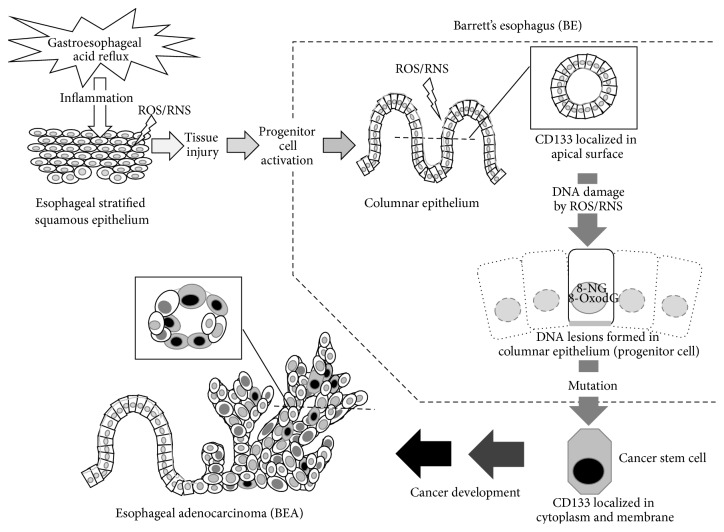Figure 4.
Proposed mechanism of Barrett's esophageal carcinogenesis (BEA) derived from Barrett's esophagus (BE). GERD induces inflammatory responses and tissue injury, which mediate intestinal dysplasia and CD133 expression in apical surface of columnar epithelial cells. Inflammatory responses also mediate DNA damage in these cells with progenitor-like properties, which may lead to accumulation of mutations. Under such conditions, the alteration in CD133 localization to cell membrane and the cytoplasm occurs, and the cells acquire the property of cancer stem cells, leading to BEA development.

